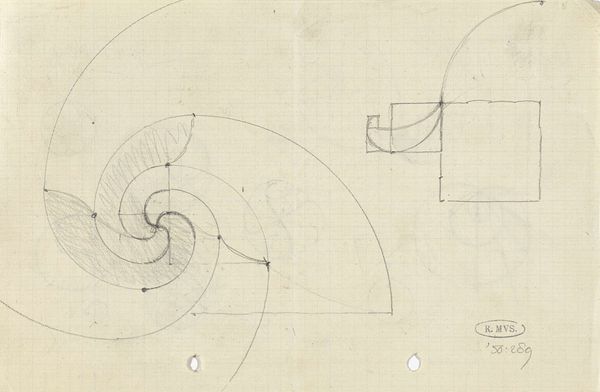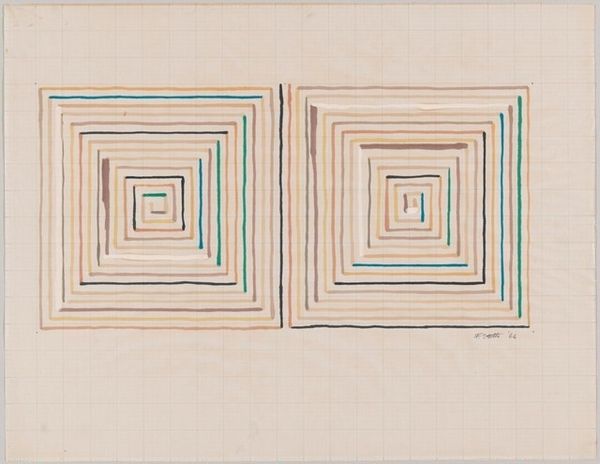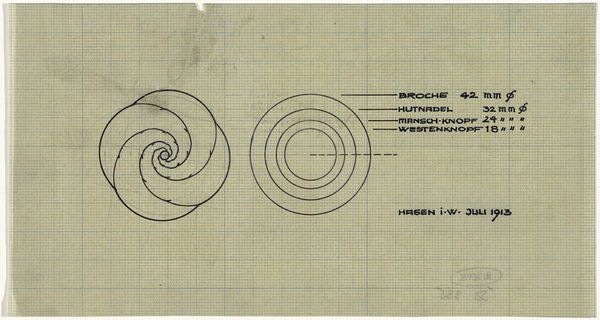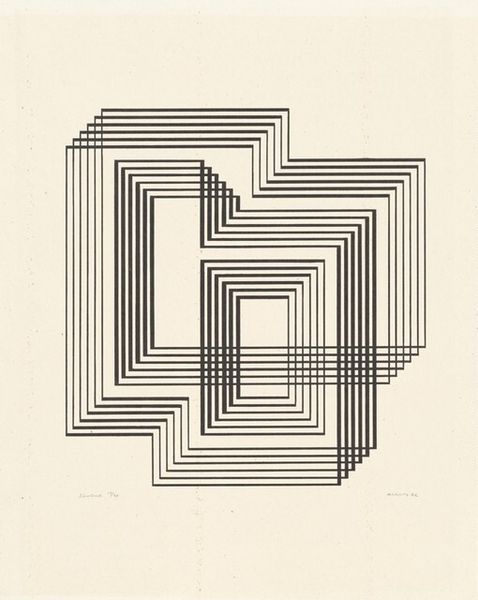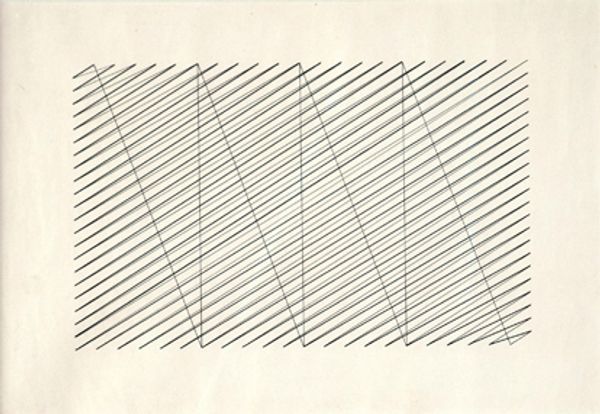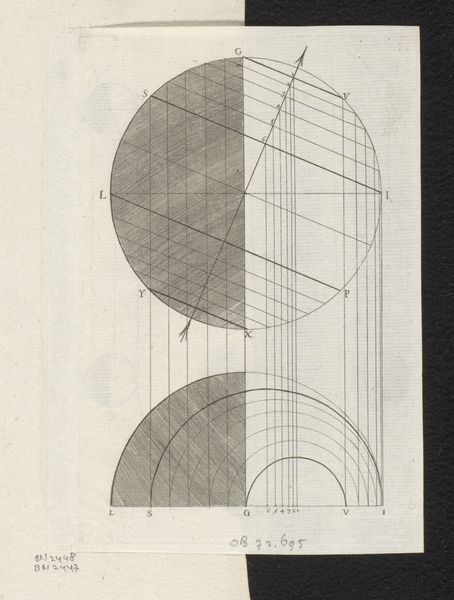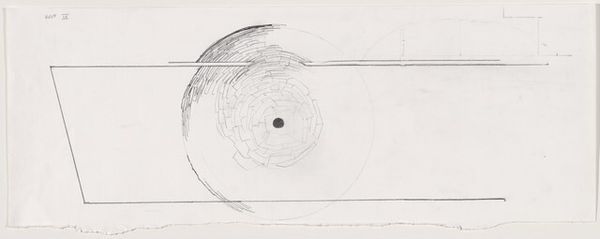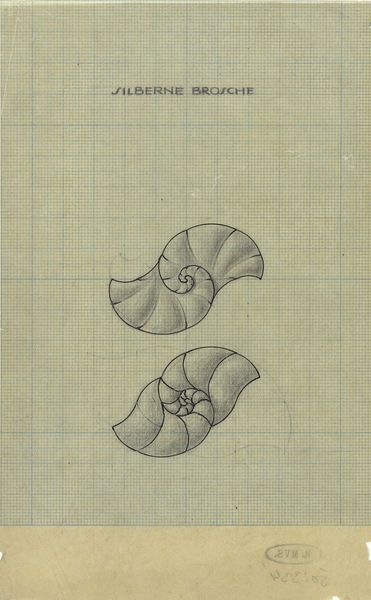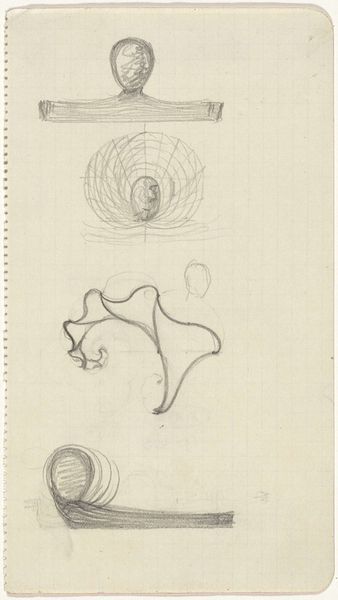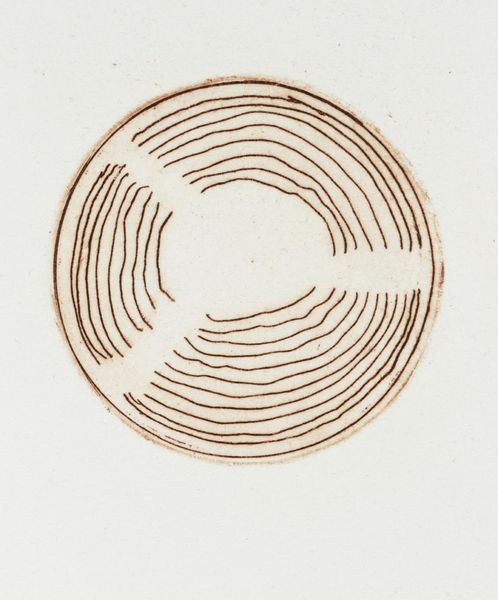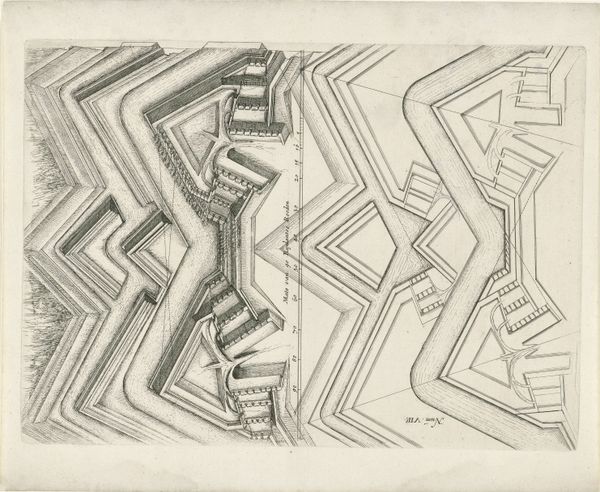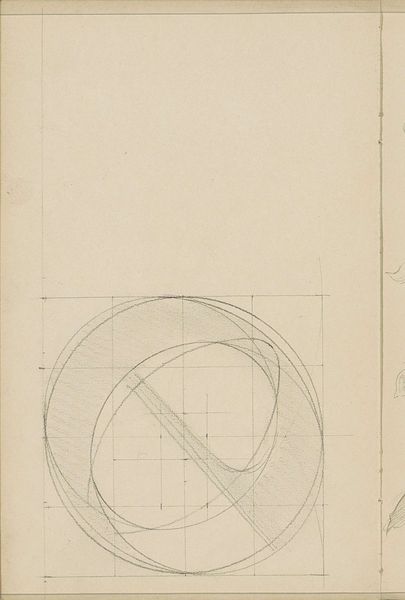
drawing, graphite
#
drawing
#
art-nouveau
#
form
#
geometric
#
abstraction
#
line
#
graphite
Dimensions: height 142 mm, width 220 mm
Copyright: Rijks Museum: Open Domain
Curator: At first glance, it gives the illusion of an impossible object, something out of Escher. Editor: I agree; there is an almost dizzying visual effect. I am curious what our listeners observe as we examine this design, entitled, “Ontwerp voor een broche,” dating roughly between 1874 and 1932. Curator: Mathieu Lauweriks created this work as a brooch design, focusing sharply on abstraction and geometry, even beyond ornamentation. This seems characteristic of the Art Nouveau movement. How do you perceive this design? Editor: For me, this design embodies that moment when social reforms began shaping design elements in the late 19th century. It rejects ornamentation prevalent in the dominant bourgeois aesthetics. Its minimalist construction symbolizes those ideological shifts. What readings might come to mind from your symbolic point of view? Curator: It reminds me of the long historical through-line that has always considered circles and spheres the "perfect" form—consider Plato's philosophy of Forms, the geometric underpinnings of sacred geometry in religious art, and so on. I believe our cultural memory responds to those traditions and values the form embodies. Editor: Absolutely. Moreover, by deliberately limiting detail, the artist might well encourage observers to discover form itself as a radical social statement. Also, do the grid lines showing through symbolize attempts at controlling forms within social systems? Curator: That’s a fascinating thought. What appears to be a background for organization could symbolize systems of control, and those curved shapes pushing against it create intriguing tension. Editor: Considering historical contexts can also transform our perception of lines. As a deliberate artistic statement, lines stand beyond mere design elements. They carry sociopolitical meaning and can foster new discourse. Curator: True—considering Lauweriks created this design within this unique historical timeframe, his formal explorations resonate strongly with the zeitgeist of emerging reform. What an interesting combination of design and context. Editor: Indeed; I'll carry that intersection with me as I explore his wider collection.
Comments
No comments
Be the first to comment and join the conversation on the ultimate creative platform.
